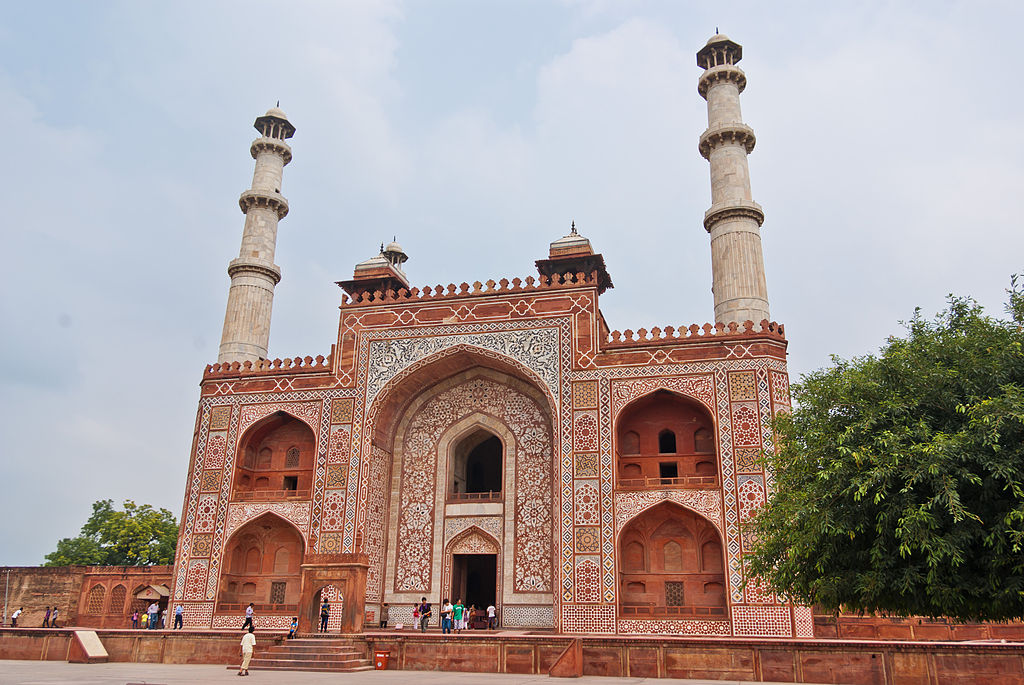
Akbar’s tomb is the tomb of the Mughal emperor Akbar. It was built in 1605–1613 by his son Jahangir and is situated in 119 acres of grounds in Sikandra, a sub of Agra, Uttar Pradesh, India.
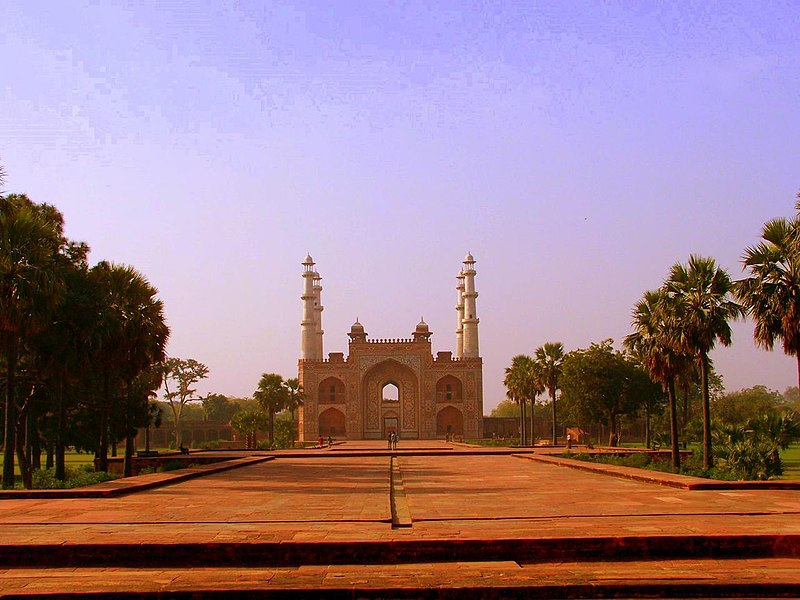
Location
It is located at Sikandra, in the suburbs of Agra, on the Mathura road (NH2), 8 km west-northwest of the city center. About 1 km away from the tomb, lies, the Tomb of Mariam-uz-Zamani, his favorite and most influential wife. Mariam was a Rajput princess.
History
After Akbar’s death, his son Jahangir planned and completed the construction of his father’s tomb in 1605–1613. It cost 1,500,000 rupees to build and took 3 or 4 years to complete.
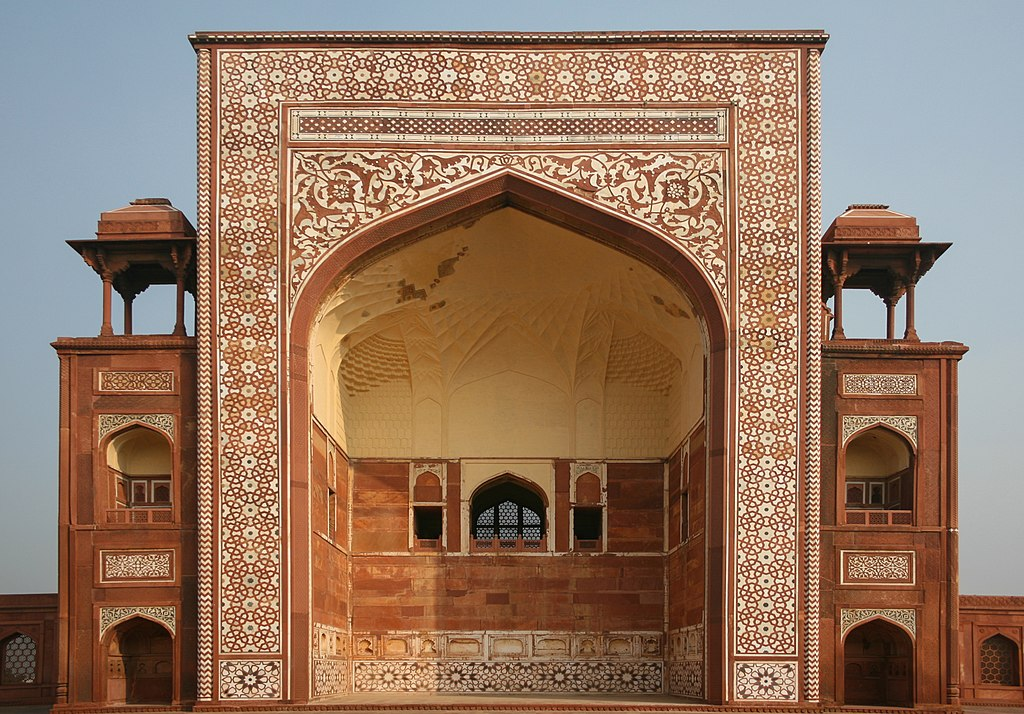
Architecture
The south gate is the largest, with four white marble chhatri-topped minarets which are similar to (and pre-date) those of the Taj Mahal, and is the normal point of entry to the tomb.
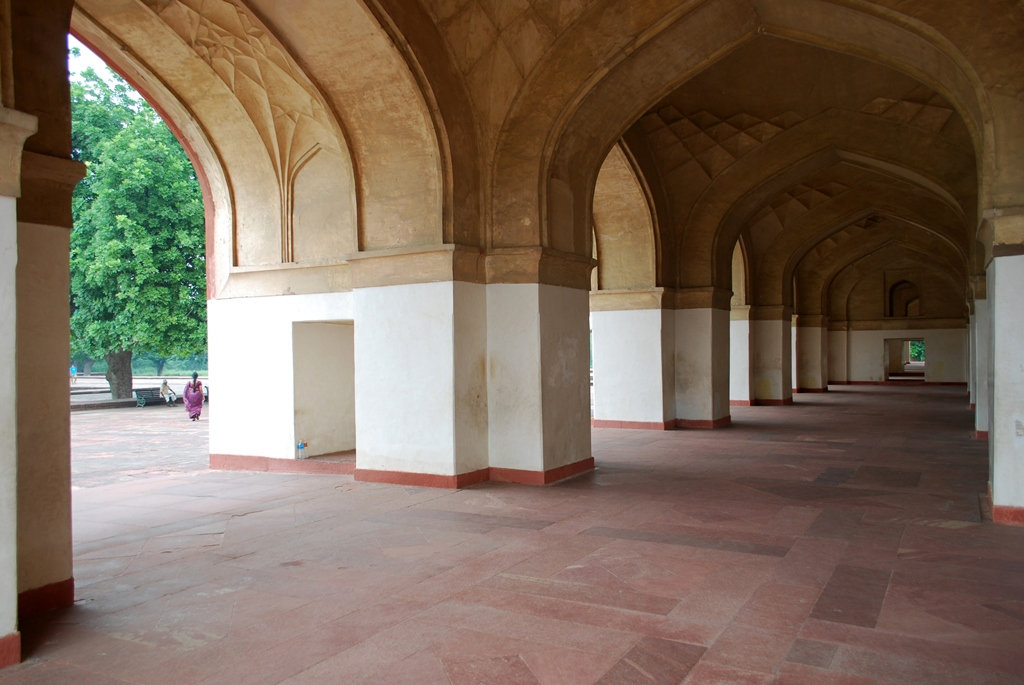
The tomb itself is surrounded by a walled enclosure 105 m square. The tomb building is a four-tiered pyramid, surmounted by a marble pavilion containing the false tomb.
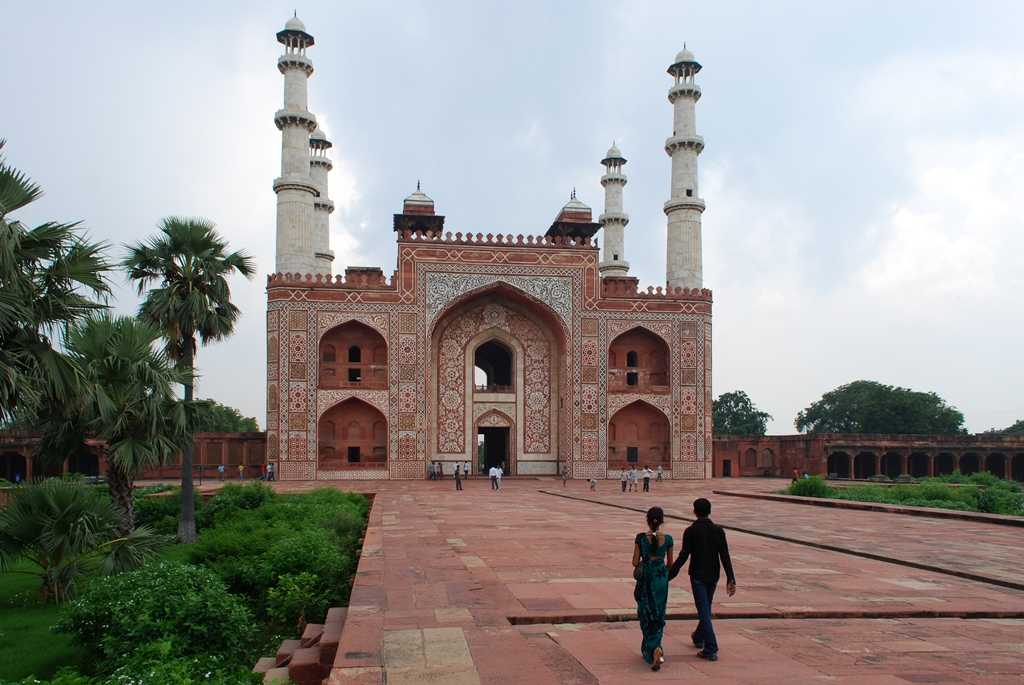
The true tomb, as in other mausoleums, is in the basement. The buildings are constructed mainly from a deep red sandstone, enriched with features in white marble.
Decorated inlaid panels of these materials and a black slate adorn the tomb and the main gatehouse.
Panel designs are geometric, floral and calligraphic, and prefigure the more complex and subtle designs later incorporated in Itmad-ud-Daulah’s Tomb.
